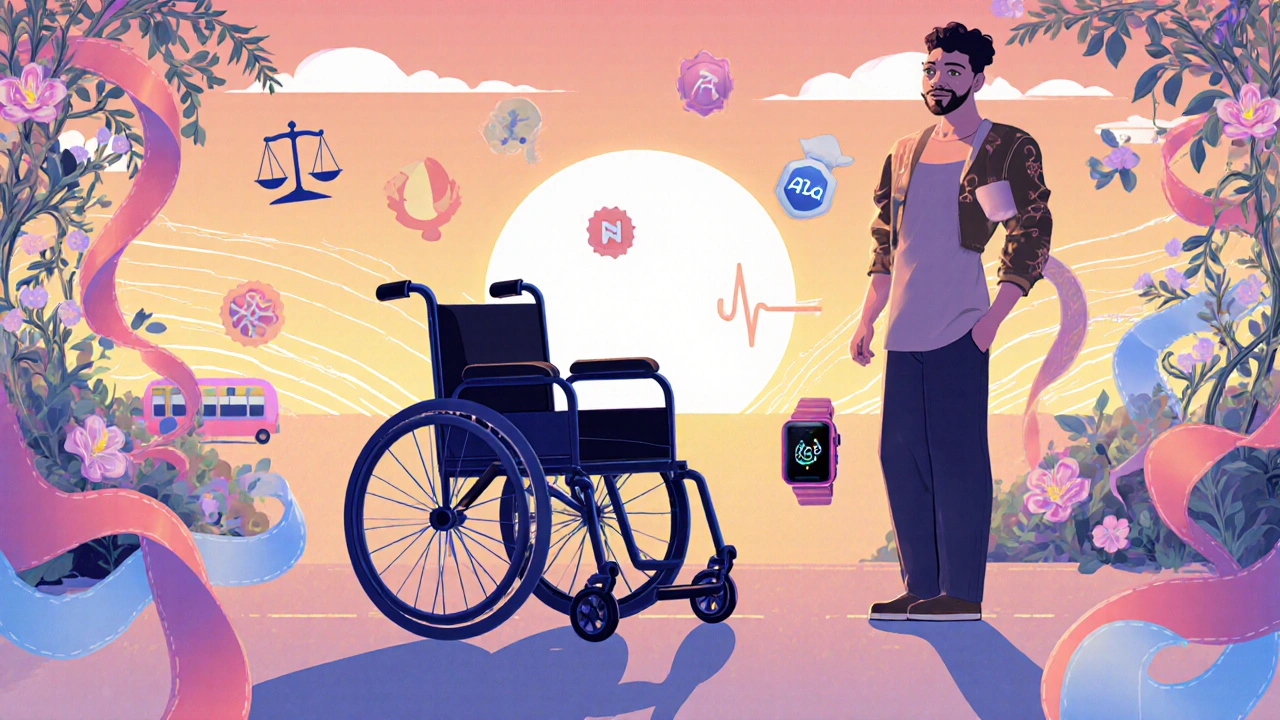How Tonic-Clonic Seizures Affect Everyday Life

Oct, 20 2025
Seizure Safety Risk Calculator
Home Safety Assessment
Your Safety Score
Safety Recommendations
Living with tonic-clonic seizures can feel like navigating a minefield where the unpredictable nature of each episode reshapes daily routines, relationships, and long‑term plans. This guide breaks down the most common ways these seizures touch every corner of life and offers practical steps to regain control.
What a Tonic‑Clonic Seizure Is
Tonic-clonic seizure is a type of generalized seizure that begins with a sudden loss of consciousness followed by stiffening (tonic phase) and rhythmic jerking (clonic phase). The episode typically lasts one to three minutes, after which the person enters a post‑ictal state characterized by confusion, fatigue, and sometimes temporary weakness.
Physical Consequences That Matter
The most visible impact is the immediate physical injury risk. Falling during a seizure can lead to bruises, fractures, or head trauma, especially if the episode occurs near hard surfaces or stairs. Even with protective measures, the sudden muscle contractions can cause muscle soreness or joint strain that lasts days.
Repeated seizures may also trigger chronic fatigue. The brain’s high energy demand during a seizure depletes glucose stores, and the post‑ictal recovery drains further energy, leaving the person feeling wiped out for hours. This lingering fatigue complicates exercise, chores, and even simple tasks like cooking.
Another often overlooked issue is respiratory compromise. During the tonic phase, the airway can close partially, reducing oxygen intake. Most people recover quickly, but those with underlying lung conditions should discuss oxygen monitoring with their physician.
Cognitive and Memory Challenges
Short‑term memory gaps are common after a tonic‑clonic event. The post‑ictal cloud can make it hard to recall what happened just before the seizure, which interferes with learning new information or following multi‑step instructions.
For students or professionals, these gaps translate into missed class notes, difficulties completing assignments, or errors on the job. Tools like a seizure diary, which logs the time, duration, and triggers of each episode, help identify patterns and improve medication timing.
Neuropsychological studies (e.g., a 2023 cohort of 124 adults) show that frequent tonic‑clonic seizures are linked to slower processing speed and reduced executive function. Early cognitive assessment and tailored rehabilitation can mitigate long‑term decline.
Emotional Ripple Effects
Living with the uncertainty of an unpredictable seizure can breed anxiety and depression. A 2022 survey of 300 epilepsy patients found that 42% reported clinically significant anxiety, often tied to fear of having a seizure in public.
Feelings of embarrassment after a public episode are common, leading many to avoid social gatherings. This social withdrawal can compound mood disorders, creating a feedback loop that worsens seizure control.
Support groups-both in‑person and online-provide a safe space to share coping strategies, lessen isolation, and reduce stigma. Mental‑health professionals familiar with epilepsy can also teach stress‑reduction techniques that lower seizure frequency.

Social and Relationship Dynamics
Friends and family often become caregivers, which reshapes relationships. While some partners feel deeper bonds through shared responsibility, others experience strain from the constant vigilance required.
Disclosure decisions add another layer of complexity. Telling an employer, teacher, or new romantic interest about a tonic‑clonic seizure can feel risky, yet early disclosure can lead to necessary accommodations (e.g., flexible break times, a safe workspace).
Clear communication about seizure triggers-such as sleep deprivation, flashing lights, or alcohol-helps loved ones understand how they can support, rather than unintentionally provoke, an episode.
Work, School, and Driving: Practical Barriers
In the workplace, unpredictable seizures may limit certain tasks, especially those requiring heavy machinery, heights, or solitary work. Employers can offer reasonable accommodations under the Americans with Disabilities Act (ADA), such as modified schedules, a buddy system, or access to a quiet area for recovery.
Students benefit from an individualized education plan (IEP) that includes extra time for tests, permission to record lectures, and a designated safe spot in classrooms. A seizure action plan, signed by the school nurse, ensures quick response if an episode occurs.
Driving regulations vary by state but generally require a seizure‑free period (often six months) before a license can be reinstated. For those who can’t drive, transportation services, ride‑share apps with medical‑friendly drivers, and community shuttles become essential for maintaining independence.
Safety Strategies for Everyday Settings
Implementing simple safety tweaks can drastically reduce injury risk. Here’s a quick checklist:
- Keep padded corner protectors on sharp furniture edges.
- Use a shower chair or handheld showerhead to prevent falls in the bathroom.
- Install grab bars near toilets and in bathtubs.
- Lay out a clear pathway to exit routes-remove rugs and clutter.
- Wear a medical alert bracelet stating the diagnosis and emergency contact.
When a seizure starts, it’s safest to gently guide the person away from danger, cushion their head, and turn them onto their side to keep the airway open. Never restrain movements; let the convulsion run its course while timing the episode.

Medical Management and Lifestyle Adjustments
Optimizing antiepileptic drug (AED) therapy remains the cornerstone of seizure control. Regular blood level checks ensure the medication stays within therapeutic range, reducing breakthrough seizures.
Beyond medication, lifestyle factors play a big role. Consistent sleep patterns, a balanced diet low in caffeine, stress‑management techniques (like mindfulness or yoga), and regular physical activity can all lower seizure thresholds.For refractory cases, advanced options such as vagus nerve stimulation, responsive neurostimulation, or surgical resection may be considered. A multidisciplinary team-neurologist, epileptologist, neuropsychologist, and nurse practitioner-guides the best individualized plan.
Technology Aids and Resources
Wearable seizure detectors (e.g., smart watches with accelerometer‑based algorithms) can alert caregivers via Bluetooth when a tonic‑clonic event is detected, cutting response times dramatically.
Mobile apps for seizure diaries not only track frequency but also integrate with electronic health records, giving clinicians real‑time data to adjust treatment.
National organizations like the Epilepsy Foundation offer webinars, educational packets, and a helpline staffed by trained counselors. These resources empower patients to ask informed questions and stay up‑to‑date on research breakthroughs.
| Impact Area | Common Effect | Mitigation Strategy |
|---|---|---|
| Physical Safety | Injury from falls | Padded furniture, grab bars, supervised environments |
| Cognitive Function | Post‑ictal memory gaps | Seizure diary, scheduled breaks, cognitive therapy |
| Emotional Well‑being | Increased anxiety and depression | Therapy, support groups, stress‑reduction practices |
| Social Life | Isolation due to fear of public seizures | Open disclosure, education of peers, safe outing plans |
| Work/School | Limited task participation | ADA accommodations, IEP plans, flexible scheduling |
| Driving | License restrictions | Seizure‑free period, alternative transport options |
Key Takeaways
- Physical injury risk can be lowered with simple home modifications.
- Post‑ictal fatigue and memory gaps affect daily productivity; use a seizure diary to plan activities.
- Emotional health is just as crucial-seek counseling and peer support.
- Legal protections (ADA, driving laws) exist; knowing your rights helps maintain independence.
- Technology-wearables and apps-offers real‑time monitoring and data for better treatment decisions.
Frequently Asked Questions
How long does a tonic‑clonic seizure usually last?
Most last between one and three minutes. Anything longer may require emergency medical attention.
Can I drive after a tonic‑clonic seizure?
In the U.S., you typically need a seizure‑free period of six months and clearance from your neurologist before regaining a license.
What should I do if someone is having a seizure?
Stay calm, protect the head, turn the person onto their side, time the episode, and call emergency services if it lasts over five minutes or there are breathing problems.
Are there lifestyle changes that can reduce seizure frequency?
Yes-regular sleep, stress‑management, a balanced diet low in alcohol and caffeine, and consistent medication adherence all help lower the risk.
What medical options exist if medication isn’t enough?
Options include adjusting AED doses, adding a second medication, vagus nerve stimulation, responsive neurostimulation, or surgical removal of the seizure focus, evaluated by a specialized epilepsy team.
Understanding the many ways tonic‑clonic seizures intersect with daily life is the first step toward reclaiming control. By combining medical treatment, safety planning, emotional support, and practical accommodations, people with epilepsy can lead full, productive lives despite the challenges.
